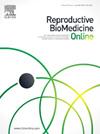AUTOMATISATION AND STANDARDIZATION TO DECRYPT BLASTOCYST MORPHOKINETICS
IF 3.7
2区 医学
Q1 OBSTETRICS & GYNECOLOGY
引用次数: 0
Abstract
Time-Lapse Microscopy (TLM) is an advanced tool used to continuously monitor the in vitro development of embryos, providing uninterrupted observation without disturbing the culture environment. Over time, TLM has enabled more precise and detailed data collection; however, clinical interpretations often remain subjective and are influenced by inter-observer variability. While static embryo assessment primarily relies on discrete morphological observations, TLM introduces a morphodynamic approach, capturing sequential developmental changes over time. This allows for a deeper understanding of embryo viability, but the clinical value of TLM remains controversial due to inconsistent evidence. Despite several trials comparing TLM with standard embryo selection methods, though, the findings are conflicting. Some studies suggest that TLM might improve pregnancy and implantation rates, while others show no significant differences. This discrepancy is primarily attributed to several confounding factors, including variability in laboratory protocols, subjective evaluations, and differences in the criteria for embryo selection and exclusion. For instance, variability within aneuploid and euploid embryos makes definitive classification challenging, as highlighted by the subjective interpretations and discordant ratings among embryologists.
To address these limitations, the integration of AI in TLM has been proposed to standardize and automate the embryo assessment process, minimizing the impact of human bias. AI-powered tools, such as CHLOE™ and iDAScore, were developed to objectively quantify key morphokinetic parameters, identify critical thresholds of developmental incompetence, and classify embryos based on standardized algorithms. These tools can be leveraged to generate novel models of embryo selection based on the data they generate, such as the “quantitative standardized blastocyst expansion assay” (qSEA), an embryo selection scheme that leverages AI to track blastocyst expansion and identify specific growth patterns that correlate with embryonic viability. The qSEA provides a robust framework for evaluating blastocyst quality and potentially improving the prediction of euploid embryos’ reproductive competence.
Special attention was paid to Day7 and low-quality blastocysts (LQB), which historically have been associated with lower competence. However, emerging data suggest that these embryos, although less competent, are not absolutely incompetent. With AI support, we consistently and reliably redefined their clinical value, minimizing the inherent bias due to their deselection at many IVF clinics worldwide.
Recently, we have also introduced novel morphokinetic markers such as blastocyst spontaneous collapse and cytoplasmic strings (Cyt-S). Spontaneous collapse is identified as a potential biomarker of reduced competence. AI algorithms were exploited to automatically detect these collapses, their quantify, their frequency, their duration, their association with euploidy, and their impact on embryo reproductive fitness. Another breakthrough involves the identification and characterization of Cyt-S, which are cytoplasmic extensions between the inner cell mass (ICM) and trophectoderm (TE). The presence, number, and duration of Cyt-S have been associated with accelerated blastocyst development, larger expansion areas, and higher euploidy rates. These observations suggest that Cyt-S may play a critical role in blastocyst morphogenesis and could serve as a novel predictor of developmental competence, while also fostering academic research on their nature and role in embryo morphogenesis. Lately, by leveraging TLM and AI at two IVF different clinics, we also defined standardized timings’ cut-offs of developmental incompetence. These timings were outlined as early as at the time of pronuclei appearance (tPNa) and no later than the time of 8-cell (t8), and shown to reliably predict embryo arrest before blastulation with less than 1% error rate.
In conclusion, the integration of TLM and AI is transforming the scenario of embryo selection strategies by automating and standardizing the evaluation of blastocyst morphokinetics. This approach reduces inter-observer variability, improves the accuracy of embryo assessment, and offers new insights into the developmental potential of embryos previously classified as low quality. As AI tools continue to mature, they promise to empower embryologists to connect the dots between developmental kinetics, chromosomal competence, and reproductive outcomes, ultimately enhancing IVF success.
求助全文
约1分钟内获得全文
求助全文
来源期刊

Reproductive biomedicine online
医学-妇产科学
CiteScore
7.20
自引率
7.50%
发文量
391
审稿时长
50 days
期刊介绍:
Reproductive BioMedicine Online covers the formation, growth and differentiation of the human embryo. It is intended to bring to public attention new research on biological and clinical research on human reproduction and the human embryo including relevant studies on animals. It is published by a group of scientists and clinicians working in these fields of study. Its audience comprises researchers, clinicians, practitioners, academics and patients.
Context:
The period of human embryonic growth covered is between the formation of the primordial germ cells in the fetus until mid-pregnancy. High quality research on lower animals is included if it helps to clarify the human situation. Studies progressing to birth and later are published if they have a direct bearing on events in the earlier stages of pregnancy.
 求助内容:
求助内容: 应助结果提醒方式:
应助结果提醒方式:


